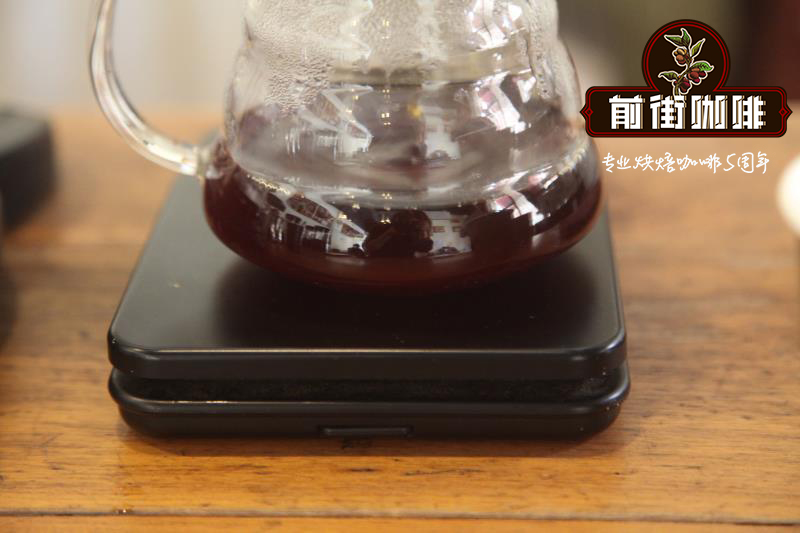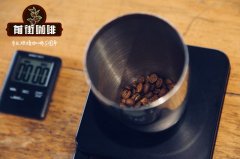What does a coffee bean go through when it changes from a seed to coffee? where did the coffee bean come from?

Professional coffee knowledge exchange more coffee bean information please follow the coffee workshop (Wechat official account cafe_style)
Have you ever thought that the coffee you drink every day has come a long way to your cup? from the moment the coffee tree was planted, it went through a series of steps such as picking, processing, transportation, acquisition and so on to present the best side of the coffee to every customer.
Today we will talk about the ten steps of coffee from seed to cup.
Look at how the coffee is "delivered" to us.
1 planting
Coffee beans are actually the seeds of coffee trees. when coffee beans are dried, they are roasted and ground into powder before they can be used for cooking. If the coffee beans are not treated, they can be used to grow into coffee trees.
Coffee seeds are usually planted in a nursery, and for a period of time after germination, the seedlings are transplanted to planned land to grow separately. Seedling transplanting needs to be carried out in a relatively humid season, so that the moisture in the soil can be maintained and the roots can grow steadily.
2 picking fresh fruits of coffee
According to different varieties, it takes 3-4 years for coffee trees to grow coffee fruit. This kind of fruit is called fresh coffee fruit, also known as coffee cherry. When the fruit is ripe, it will show bright red and can be picked at this time.
Generally speaking, there is one production season every year, but in some countries, such as Colombia, it blossoms twice a year, so there is a main picking season and a second picking season.
In many countries, it is picked by hand, so there is a great demand for labor. Some countries like Brazil, because the terrain is relatively flat, most of the coffee is harvested by machine.
There are two main methods when picking.
Pruning: whether by hand or by machine, all fresh coffee fruits are picked directly from the branches.
Selective picking: only ripe fruits are selected when picking, usually through manual picking. Pickers pick ripe fruit every 8-10 days, because this method requires a lot of labor and high cost, so it is mainly suitable for picking boutique Arabica coffee.
A good picker can pick an average of 100-200 pounds of fresh fruit a day and eventually produce 20-40 pounds of coffee beans.
3 fresh fruit treatment
After the fresh fruit of the coffee is picked, we should proceed to the next step-fresh fruit treatment as soon as possible. There are three commonly used treatment methods, namely, sun treatment, washing treatment, and honey treatment.
Wash it with water and explain briefly how to deal with the fresh fruit of coffee.
First of all, fresh fruits picked freshly should be hand-picked or floated to select fresh fruits with moderate maturity and high density, and the over-ripe and immature fruits should be graded.
Then put the selected fresh coffee fruit into the desiccator and remove the exocarp and pulp of the fresh fruit.
The coffee beans are then graded according to their weight as they pass through the sink, with light beans floating on top and heavy beans sinking to the bottom. In this way, the coffee beans will be graded according to their size after passing through several sinks.
After grading, the coffee beans enter a large fermentation tank filled with water. According to the conditions of the beans, as well as the local climate and altitude, the coffee beans will ferment for 12-48 hours. This process removes the pectin layer that still adheres to the inner pericarp of the coffee beans.
After fermentation, the coffee beans are rinsed with water again to prepare for drying.
4 dried coffee beans
On a sunny day, the beans are basked on the viaduct in the hot sun
Coffee is usually dry until the moisture content is about 11%, and it can be stored.
During the drying process, the coffee is still covered with endocarp. It can be spread on a tanning bed or on a clean floor, and should be turned frequently. If possible, coffee beans will be dried directly with large machines. After drying, the coffee beans are still bagged with endocarp.
5 hulling by processing
Coffee with endocarp needs to be shelled before transportation
Shelling is to remove the endocarp of the processed coffee in the machine.
Graded and stored by the size of coffee beans, and sometimes according to the color of coffee beans
Generally speaking, the size of coffee beans ranges from 10 mesh to 20 mesh. This number represents the size of the hole in the sieve. The size of each hole is a multiple of 1 green 64 inch, 10 mesh is about 10 inch 64 inch, and 15 mesh is 15 inch 64 inch.
In the end, defective beans will be picked out by hand or machine, such as coffee of the wrong size or color, overfermented coffee beans, worm-eaten beans, shell beans, unripe beans, etc.), and the final exported coffee beans are of better quality.
6 coffee product test
Before the importer imports coffee, he will ask the exporter for a sample and decide whether to buy it after a cup test and evaluation.
The quality of coffee is evaluated by a professional cup tester.
The cup tester will bake the sample and test the cup within 8-24 hours. When the cup is tested, the coffee will be evaluated by its dry, wet, sweet, acidity, sweetness, mellow thickness, and defects, and finally a score will be given to the coffee.
Through the score given by the cup tester, the raw bean trader will know whether the price of coffee is moderate, the ideal quantity to buy, and so on.
7 Coffee export
After the importer agrees to buy the coffee, the coffee will be exported by shipping and other means.
The coffee for export is shelled coffee beans, which is what we usually call raw coffee beans, usually packed in buckets or bags and shipped on cargo ships.
According to the data, the output of coffee in the 16th season in 2015 was about 152.7 million bags (60 kg each).
8 Coffee roast
Roasting converts raw coffee beans into coffee roasted beans that we can buy directly in coffee shops.
The baking process lasts about 8-12 minutes. The baking curves of different beans or different combinations of beans are different. In order to show the best flavor of coffee, roasters find out the most suitable baking curve for each type of coffee through continuous experiments.
9 ground coffee
The purpose of grinding is to show the flavor of coffee as fully as possible, and different brewing methods require different degrees of grinding.
Generally speaking, the finer the coffee is ground, the faster the coffee is extracted, which is why the powder of espresso is much finer than that of brewing.
When making espresso, the degree of grinding is very important for the stability and flavor of the concentrate, so baristas spend some time adjusting the grinder every day after turning on the bean grinder or when using different coffee beans. otherwise, the taste of the coffee you drink in the morning may be very different from that in the afternoon.
10 brewing coffee
Brewing coffee is the last process of presenting coffee to consumers.
There are many kinds of brewing methods, including V60 brewing, chemx brewing, French pressure pot brewing, Philharmonic pressure, siphon pot, smart cup, of course, espresso, and so on.
A cup of coffee has gone through the above ten steps before it finally becomes our coffee.
We usually say that food is not easy to come by, but in fact, coffee is even more difficult to come by. Many people in the whole coffee supply chain have made their best efforts to make consumers drink the best coffee.
Coffee is hard to come by, but good coffee still needs to be shared with everyone.
Important Notice :
前街咖啡 FrontStreet Coffee has moved to new addredd:
FrontStreet Coffee Address: 315,Donghua East Road,GuangZhou
Tel:020 38364473
- Prev

What's the difference between boutique coffee beans and commercial coffee beans? What is commercial coffee?
Professional coffee knowledge exchange more coffee bean information please follow the coffee workshop (Wechat official account cafe_style) what makes boutique coffee so special? We know that the quality of boutique coffee is much better than commercial beans, but why? Does it mean that the coffee fruit already has these favorite flavors and characteristics when it is picked from the tree? If only it were that simple!
- Next

What is decaf coffee? Is decaffeinated coffee good?
Professional coffee knowledge exchange more coffee bean information please pay attention to the coffee workshop (Wechat official account cafe_style) the so-called low-caffeinated coffee means that the coffee beans are processed before they are sent to the roaster to separate the caffeine that affects sleep, but low-caffeinated coffee is not 100% caffeine-free, can only remove 94% to 98% caffeine, still contains residues
Related
- Beginners will see the "Coffee pull flower" guide!
- What is the difference between ice blog purified milk and ordinary milk coffee?
- Why is the Philippines the largest producer of crops in Liberia?
- For coffee extraction, should the fine powder be retained?
- How does extracted espresso fill pressed powder? How much strength does it take to press the powder?
- How to make jasmine cold extract coffee? Is the jasmine + latte good?
- Will this little toy really make the coffee taste better? How does Lily Drip affect coffee extraction?
- Will the action of slapping the filter cup also affect coffee extraction?
- What's the difference between powder-to-water ratio and powder-to-liquid ratio?
- What is the Ethiopian local species? What does it have to do with Heirloom native species?

